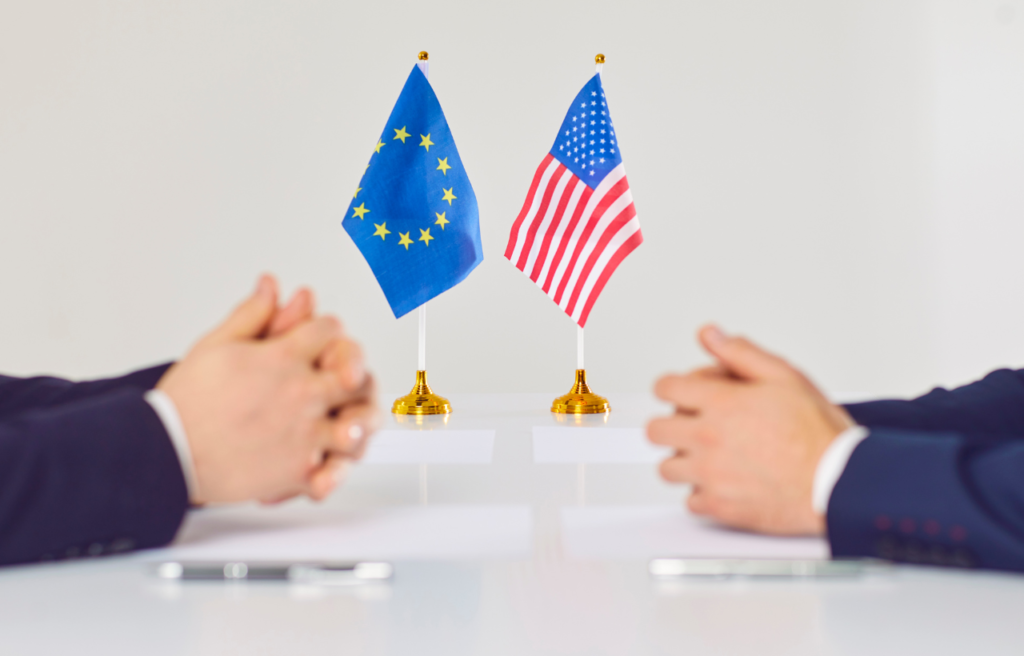
The Axis of Upheaval: Challenges to the US and EU (2025)
China, Russia, Iran, North Korea, and Pakistan as a Geopolitical Threat
Introduction
The "Axis of Upheaval," comprising China, Russia, Iran, North Korea, and Pakistan, represents a loose but increasingly coordinated coalition of authoritarian states challenging the US- and EU-led global order. Coined by analysts at Foreign Affairs, this grouping—sometimes called "CRINK" (China-Russia-Iran-North Korea) with Pakistan as an extension—has deepened ties since Russia’s 2022 invasion of Ukraine, driven by shared opposition to Western hegemony.[1] The September 2025 SCO summit in Tianjin, attended by leaders of these nations, underscored their anti-Western stance through military displays and diplomatic rhetoric.[2] This webpage examines their formation, cooperative domains, challenges to the US and EU, limitations, and strategic countermeasures.
Formation and Historical Context
The bloc’s roots lie in Cold War-era ties, but Russia’s 2022 invasion of Ukraine catalyzed deeper alignment. Facing Western sanctions, Russia sought support from China, Iran, and North Korea, with Pakistan joining due to its strategic ties with China (via the Belt and Road Initiative) and Iran.[3] Key milestones include:
- 2022 Ukraine War: North Korea supplied 50% of Russia’s ammunition, Iran provided drones, and China purchased discounted Russian oil ($244.8 billion in bilateral trade by 2024).[3]
- 2024–2025 Pacts: Russia-North Korea mutual defense treaty (June 2024), Russia-Iran strategic partnership (January 2025), and China’s “no-limits” partnership renewal.[4]
- 2025 Developments: Pakistan’s Rocket Force announcement (August 2025) and the SCO summit, where leaders condemned US actions in Iran and Israel, showcasing hypersonic and nuclear-capable weapons.[5]
Their shared goal is a multipolar world, resisting US “bullying” while leveraging autocratic solidarity, despite historical frictions (e.g., Russia-China border disputes).[6]
Key Areas of Cooperation and Challenges
The bloc’s coordination in military, economic, and diplomatic domains challenges the US and EU, exploiting Western divisions and overextension.
Military and Security Cooperation
- Ukraine War Support: North Korea’s 30,000 troops in Kursk (July 2025) and Iran’s drones/missiles bolster Russia. China provides dual-use components, while Pakistan’s military ties with China (e.g., JF-17 jets) enhance deterrence.[7]
- Nuclear/Missile Proliferation: All five are nuclear or near-nuclear powers. Iran and North Korea share missile tech; China has aided Iran and Pakistan. Pakistan’s Rocket Force targets India, complicating US-India ties.[8]
- Joint Exercises: China-Russia-Iran naval drills (March 2025) and SCO parade weapons (e.g., hypersonics) challenge US naval dominance.[2]
- Challenge: Overextends US forces across Ukraine, Middle East, and Indo-Pacific. Europe faces Russian-North Korean escalation risks, straining NATO.[9]
Economic and Sanctions Evasion
- Trade Networks: China absorbs 90% of Iran’s oil and dominates North Korea’s trade. Russia-Pakistan ties grow via Afghanistan minerals, and BRI integrates Pakistan (Gwadar Port) and Iran.[3]
- De-Dollarization: SCO and BRICS push non-dollar trade, eroding the petrodollar and EU economic stability.[10]
- Challenge: Sanctions lose efficacy as China’s banking and Russia-India oil deals bypass controls. Trump’s tariffs (e.g., 50% on India) push partners toward China.[11]
Diplomatic and Information Warfare
- Multipolar Advocacy: At the UN and SCO, the bloc condemns US strikes on Iran (June 2025) and supports Russia’s Ukraine narrative. Pakistan aligns with China-Russia at the UN.[12]
- Proxy Influence: Iran’s Middle East proxies, Pakistan’s in Afghanistan, and North Korea’s cyber ops undermine US allies.[13]
- Challenge: Trump’s “America First” policies and EU’s Ukraine fatigue fracture Western unity, boosting the bloc’s Global South appeal.[14]
Limitations and Internal Frictions
The bloc is not a formal alliance. Russia’s non-support for Iran during US/Israeli strikes (June 2025) highlights limits. China prioritizes EU trade over full commitment, viewing Iran as “naïve.” Pakistan balances US aid with Chinese investments. Historical rivalries (e.g., Russia-Iran oil competition) and China’s economic dominance could fracture unity.[7][6] Analysts note the “axis” is more opportunistic than cohesive.[15]
Implications for the US and EU
The bloc poses a “generational challenge,” risking US overextension across multiple theaters and straining EU defense budgets (NATO’s 2% GDP goal).[3] Trump’s Ukraine cease-fire push could weaken the bloc if successful, but failure may solidify it. Key implications include:
- US Overextension: Diverts resources from Indo-Pacific (e.g., Taiwan) to Ukraine and Middle East.[9]
- EU Vulnerabilities: Faces hybrid threats (energy coercion, migrants) and economic strain from Ukraine costs.[4]
- Global Norms: Erodes sanctions efficacy and non-proliferation regimes, with 46% of experts predicting a formal alliance by 2035.[14]
Recommendations
To counter the bloc, the US and EU should:
- Strengthen Alliances: Bolster IMEC corridor and QUAD to counter BRI and isolate Pakistan.[16]
- Targeted Sanctions: Focus on China’s tech transfers while engaging Russia economically to weaken its China reliance.[13]
- Indo-Pacific Focus: Support Japan and India to counter Pakistan and China’s regional influence.[17]
- Diplomatic Engagement: Use UN and G20 to isolate the bloc’s narrative and rebuild Global South trust.[18]
Conclusion
The Axis of Upheaval, amplified by the SCO summit and Pakistan’s missile advancements, challenges the US and EU through coordinated military, economic, and diplomatic actions. While internal frictions limit its cohesion, the bloc’s pragmatic cooperation exploits Western divisions, particularly Trump’s tariffs and EU fatigue. A unified response—strengthening alliances, targeting sanctions, and engaging diplomatically—is critical to prevent a bipolar world favoring autocracy. Monitor UN and SCO developments for updates.[2][3]
Sources
- The Axis of Upheaval, Foreign Affairs
- SCO Summit: Leaders Gather in Beijing, CNN
- Axis of Upheaval, CNAS
- 10 Conflicts to Watch in 2025, Crisis Group
- China Calling New Axis Leaders, Newsweek
- CRINK, Wikipedia
- The Fragile Axis of Upheaval, Foreign Affairs
- Nuclear Dimension of the Axis, Ifri
- Axis of Upheaval Challenges, ICDS
- China, Russia, Iran, North Korea Show Axis of Upheaval, Pravda
- China’s Victory Day Parade, The Guardian
- Axis of Upheaval in West Asia, ORF
- Cooperation Threats to America, Carnegie
- Welcome to 2035, Atlantic Council
- Unveiling the Global Threat, Henry Jackson Society
- Sharper: Axis of Upheaval, CNAS
- Axis of Upheaval: New Era, Eurasia Review
- X Post by @EsenErmisErturk, August 26, 2025